This was published 8 years ago
Los Potreros estancia, Patagonia: A day in the life of an Argentine cowboy (gaucho)
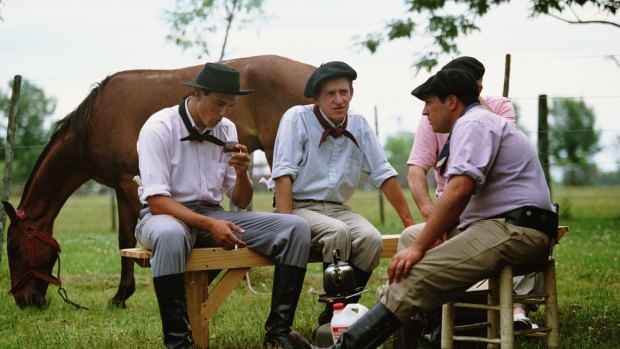
Gauchos take time out for a cuppa.Credit: Peter Adams
It's the headwear that really marks them out. While tough-guy cowboys and horsemen the world over tend to favour wide-brimmed hats, the sort of rugged leather jobs that look like they've spent years being trampled on by hooves and beaten back into shape with hammers, the gauchos of Argentina go for something a little jauntier.
Perched on the heads of these hardy, weather-beaten folk sits the most dashing of caps, the beret.
Gauchos, you should remember, are Argentina's hard men and a national icon. They are the nomadic horsemen, the brooding, silent types who sit on their steeds and stare off into the distance, who cook slabs of beef over open flames, who shun human contact in favour of the company of cattle. And they wear berets?
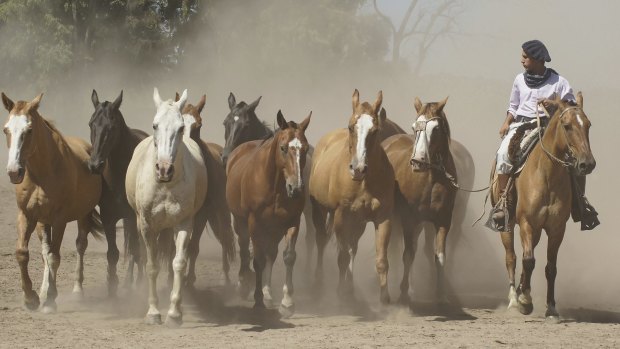
Gaucho with horses.Credit: iStock
It's actually a mark of their heritage, as the gauchos can trace their roots back to the colonists who arrived in Latin America from the Basque country of Spain and France. There, the beret reigns supreme, and it's a tradition that has been retained over hundreds of years by the horsemen of central Argentina.
Want to become a gaucho? Then the first thing you need is a beret.
And that's exactly what I've got, having just bought a suave maroon number from one of the stable workers at Los Potreros, a working cattle station, or "estancia", in the hills above Cordoba. I figure I'm going to need every advantage I can get, because for the next few days I'll be attempting to live the life of a gaucho, despite my complete lack of horsemanship, my novice status on the open-fire grill, and my terrible attempts at ruggedly staring at things.
We sit down to a typical gaucho lunch: heavily salted beef, chorizos, and cuts of pork, served with the minimum of vegetables and sides.
But this is why people visit Los Potreros: to briefly indulge gaucho fantasies in the home of the Argentinean horseman.
The setting is certainly right. Nestled in the Sierras Chicas hills a few hours from Cordoba, Los Potreros is true gaucho country, a place of rocky outcrops piercing the golden, grass-covered hills.
The whitewashed farmhouse has been there for more than 300 years and it oozes history. The Beggs have been here for 100 years; however, there's been a farm on this property since 1574. And it's still a working cattle station and horse farm.
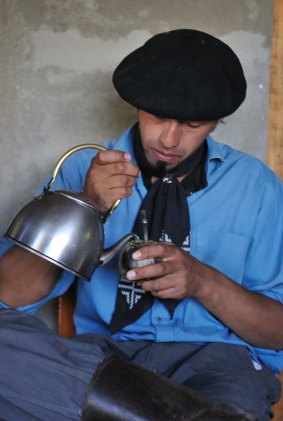
Gaucho drinking from a teapot.Credit: WIN-Initiative
The idea for visitors to Los Potreros is to live life on a working estancia, to enjoy the gaucho experience while staying in a beautiful old homestead. Tourists have been coming here for the last 15 years; there's only been electricity in the homestead for the last 10. For the rest of its history, Los Potreros has been a place to raise cattle on true gaucho country high in the pampas.
Ask Louisa Begg how many horses there are at Los Potreros and she doesn't miss a beat. "One hundred and forty-eight," she smiles.
And today I'm sitting on one of those horses, Rebenque. This is a gentle afternoon ride, a way for Louisa and husband Kevin to judge my skills while we make slow passage from the main farmhouse over to another homestead on the property. The cattle might be Los Potreros' main purpose, but the horses are the stars. Louisa can name all 148 of them, and pick them out from a few hundred metres away. Kevin's equally enamoured, although a little quieter about it.
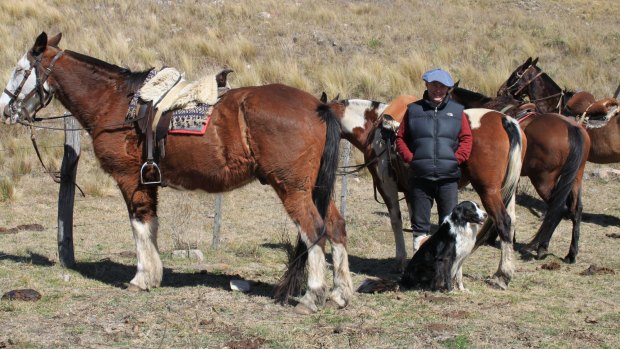
Los Potreros owner Kevin Begg, Argentina.Credit: Ben Groundwater
Don't be fooled by their names – Louisa is a British expat, but Kevin is as Argentinean as they come. He was born in Buenos Aires, and grew up here on the family estancia. He also has lived in London, which is why his English is flawless and his homestead can sometimes feel more British than Britain.
Kevin sits astride his horse resplendent in a mix of cultural styles. He wears the gaucho's beret and has a scarf knotted with a Scottish thistle pin around his neck. He leads our band of horsemen out with practised ease.
Los Potreros has its own stable of gauchos, as every estancia does. These are local horsemen who help control the cattle, and band together once a year for "La Yerra", or "The Iron", when new calves are branded during the day and a party is thrown at night. Today one of the gauchos, Pablo, rides with us.
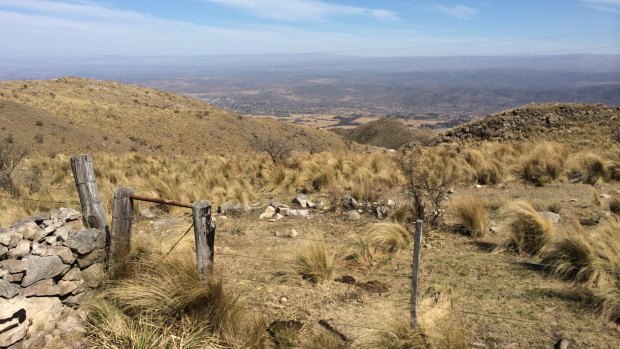
The view of the pampas from Los Potreros, Argentina. Credit: Ben Groundwater
It's my first afternoon on the farm and the horses don't get above a gentle trot as we make our way over those golden hills with the sun slowly setting behind us.
We get back to the homestead in time for a gin and tonic on the verandah, before retiring to the dining room for grilled pork from farm-reared pigs. It's family-style dining around a big wooden table, and you can't help getting more of that "more British than Britain" feel when Kevin rings a bell to let the kitchen staff know we're ready for dessert.
Afterwards we gather around the fire in the drawing room – a quaint little space with old pictures of the family – swapping tales of gaucho greatness over glasses of local malbec wine.
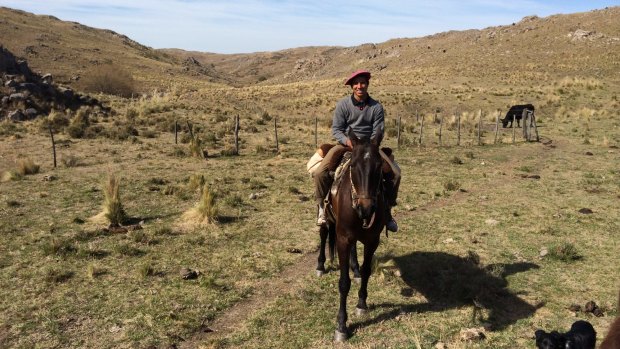
Gaucho Pablo on his horse, Los Potreros, Argentina. Credit: Ben Groundwater
The next morning it's back to business. Kevin needs to check on the cattle on some of the farthest reaches of the property, so we're heading out for a proper ride.
The pace is mostly gentle once again, which suits this novice rider, giving us enough time to take in the beauty of the Sierras Chicas as we manoeuvre our steeds through terrain that ranges from flat and hard to steep and rocky. Rebenque was born for this so all I have to do is focus on staying in the saddle, even when the pace is cranked up to a gallop occasionally.
Want to feel like a real gaucho? Try clinging to a galloping horse as it charges over the Argentinean pampas. You don't even need a hat to play the part.
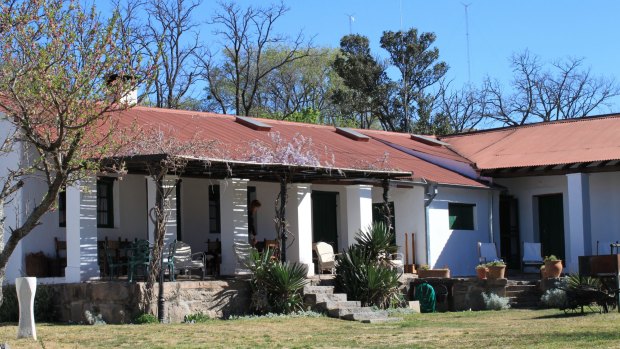
The homestead at Los Potreros, Los Potreros, Argentina.Credit: Ben Groundwater
Today our little group, that again includes Pablo, passes small homes where the horsemen now live; we wander through paddocks where cattle roam around munching grass. Our party is trailed constantly by a band of three farm dogs, indefatigable animals who dart in and out of the grass, chasing birds and having a ball.
Kevin is waxing lyrical about every Argentine horseman's favourite pastime: polo. There's a polo field here at Los Potreros, where matches are frequently hosted, and interested visitors can give the game a go, whatever their level of skill. There are certain weeks of the year dedicated to teaching novices the ways of polo, although it's not something I'll be learning today.
After a few hours in the saddle, checking on cattle and touring the beautiful sierras in the best way possible, Kevin steers us back towards the homestead, along mountain paths and across trickling streams, until a familiar smell comes wafting across the pampas: asado. The gaucho's grill.
We round a corner and there's the old house, a "parrilla" grill set up in the front garden, being tended by one of the kitchen staff as an old gaucho keeps an eye on things. "They actually don't like women being the 'asadors'," Kevin explains. "But they're getting used to it."
After a few lessons on working the tongs, we sit down to a typical gaucho lunch: heavily salted beef, chorizos, and cuts of pork, served with the minimum of vegetables and sides.
This is where my true skill as a trainee gaucho can be shown off. I may not be much of a horseman, I may not be great on the parrilla, and I'm not very good at staring ruggedly at things. But I know how to eat. And I've got an awesome hat.
TRIP NOTES
More information
Getting there
LAN Airlines operates seven one-stop flights each week from Sydney to Santiago, Chile, with onward connections to Cordoba via Buenos Aires. LAN also offers non-stop flights between Sydney and Santiago every Monday, Wednesday and Saturday in a codeshare partnership. Call 1800 126 038 or go to lan.com.
Staying there
Farm stays at Los Potreros start at $US450 ($574) a night, including all meals and drinks, transfers from Cordoba airport, and activities on the estancia. For bookings and information see website above.
The writer travelled as a guest of Chimu Adventures and LAN Airlines.
Five things to see in Cordoba
Take a break from adventure on horseback to explore this beautiful city.
Iglesia Sagrado Corazon
The "Church of the Sacred Heart" is a beautiful neo-Gothic structure in central Cordoba, designed by Italian architect Augusto Ferrari and well worth a tour to take in its intricate facade.
Parque Sarmiento
This huge public park is the perfect place to escape the bustle of the city, a sprawling array of gardens and playing fields set next to Cordoba's university district.
Alcorta Restaurant
All that cattle herding at Los Potreros will probably put you in the mood for a good steak, and there's none better – possibly in the world – than the cuts served up at Alcorta restaurant, see alcortacarnes.com.ar
Plaza San Martin
Set among Cordoba's pedestrian shopping malls, Plaza San Martin is the heart of the old town, lined with monasteries and the main cathedral, and host to daily markets and events.
Cordoba Cathedral
This National Historic Monument dates to 1709, and is one of the best preserved churches from that era – though in the surrounding streets you'll find many other examples to explore.
Sign up for the Traveller Deals newsletter
Get exclusive travel deals delivered straight to your inbox. Sign up now.